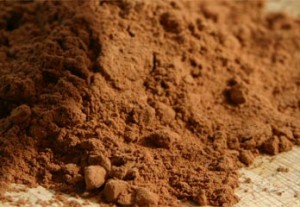Although cocoa beans have been used by mankind for thousands of years, it was not until 1828 that cocoa powder as we know it became available, thanks to the work of Dutch chemist C. J. Van Houten. Van Houten discovered a process for removing most of the fat, or cocoa butter, from the roasted cocoa beans, thus producing cocoa powder. He found that adding an alkaline substance, such as potassium carbonate, to the cocoa powder resulted in improvements to the taste and properties of natural cocoa powder. This treated form of cocoa powder became known as Dutch cocoa, or alkalized cocoa powder.
Contents
Uses
- Alkalized cocoa powder is preferred by many cooks for baking cakes, cookies, and pastries because of its mellow, smooth flavor and rich, dark color. It is easier to mix with other ingredients, and will absorb liquids more readily than natural cocoa powder. Alkalized cocoa powder is used in ice cream, hot cocoa mixes, candies, beverages, and chocolate syrups where a full-bodied, smooth, chocolate flavor is desired.
Benefits
- The health benefits of chocolate have been discussed in media a great deal in recent times, and this is good news to many chocolate lovers. Unfortunately, while alkalized cocoa powder is more palatable to some, it is lower in the health-promoting flavanol antioxidants than untreated cocoa. According to a study presented in the Journal of Agricultural and Food Chemistry in 2008, the processing that alkalized cocoa powder undergoes substantially reduces the amount of beneficial substances it contains.
Cautions
- No significant side effects reported.
Interactions
- None are well documented, please consult with your doctor.
Other names
Dutch cocoa
References
Source: Cocoaskiss, http://cocoaskiss.blogspot.bg/2012/07/what-is-alkalized-cocoa-powder.html

